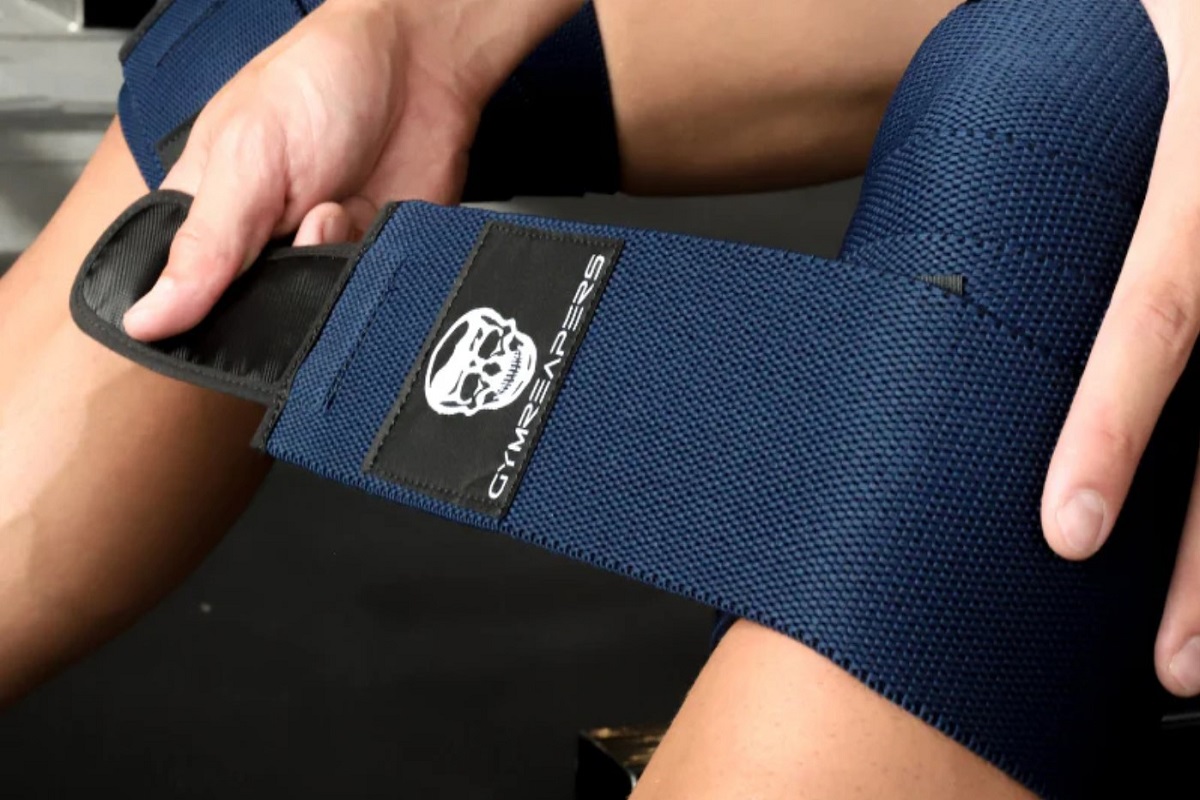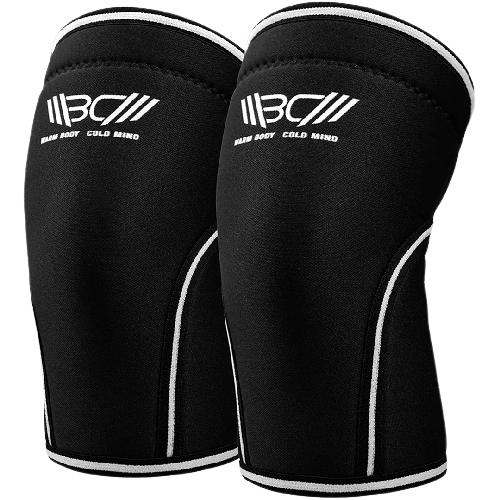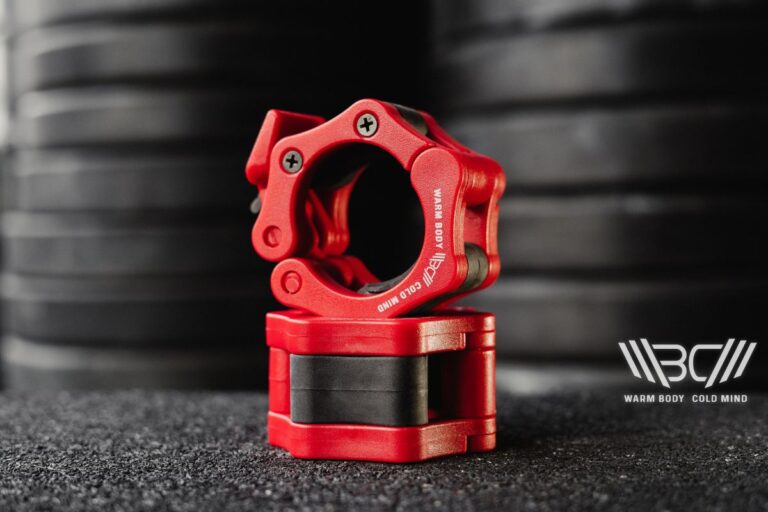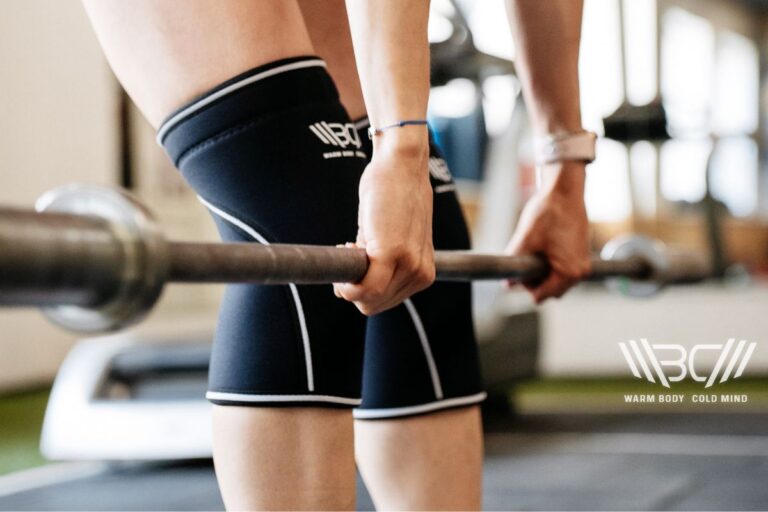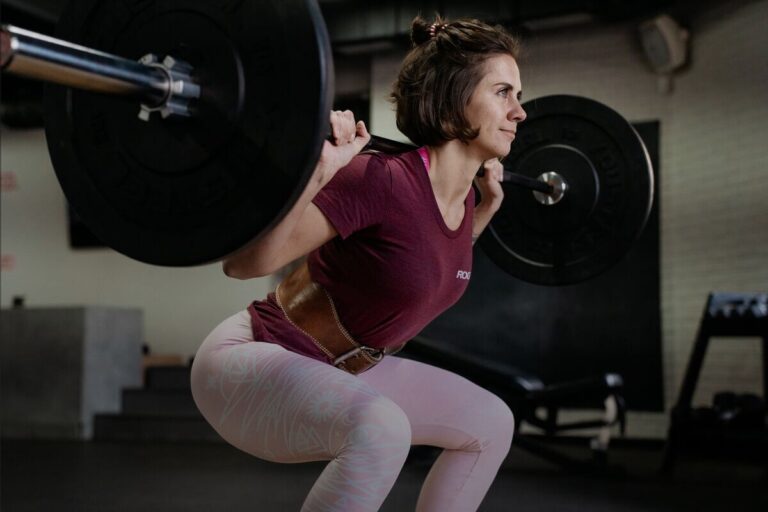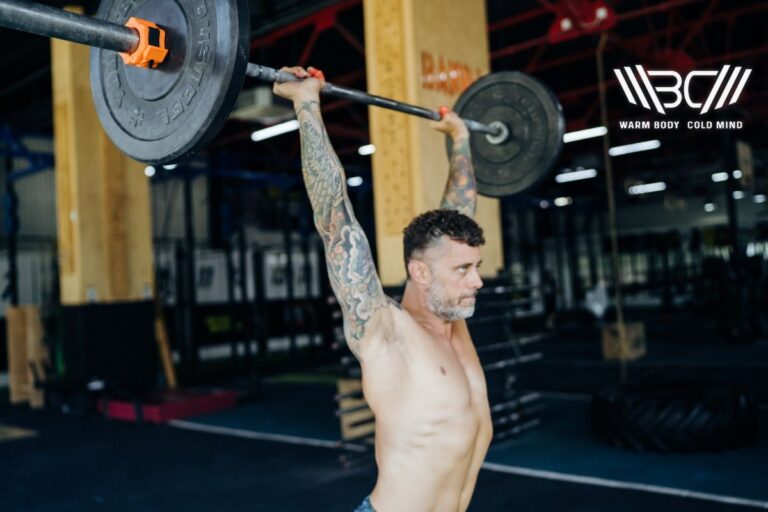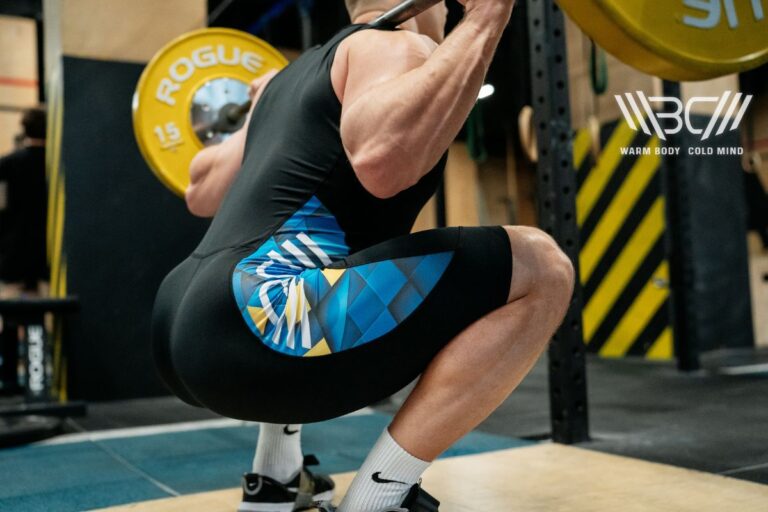How to Use Knee Wraps: A Step-by-Step Guide to Maximizing Your Lifts
From powerlifting to plyometrics, knees bear the brunt of training regimes. Excessive joint stress can limit performance or cause injuries, and knee wraps can be a simple yet successful remedy in such a case.
We’ll explore dos and don’ts as well as pros and cons in this detailed guide on how to use knee wraps.
How to use knee wraps? – Learning how to put on knee wraps is essential to gain maximum performance benefits while avoiding drawbacks, like non-optimal tightness and overuse of the accessory. There are different knee wrapping techniques you should try before settling on the one that suits you.
Knee Wraps: What Is It? When and Who Can Use It?
Knee wraps are a compression gear usually made from the same elastic material as wrist wraps to support and stabilize the joint and surrounding musculature under heavy loads. Knee sleeves, with their readymade fits, are a popular substitute. You’ll need one of these in your gym bag to maximize gains.
The most common use of knee wraps is during squats. You’ll see powerlifters tightly wrapping their knees before moving big weights — doing so lets them break PRs thanks to the added assistance. Other possible exercises include leg presses, power cleans, deadlifts, and lunges.

Pro Tip:
Flexing your wrapped knees is like loading a spring.
However, accessories should be employed sparingly to stop them from being a crutch. Otherwise, relevant tendons may fail to develop naturally. You don’t need knee wraps for lifting early in your muscle-building journey.
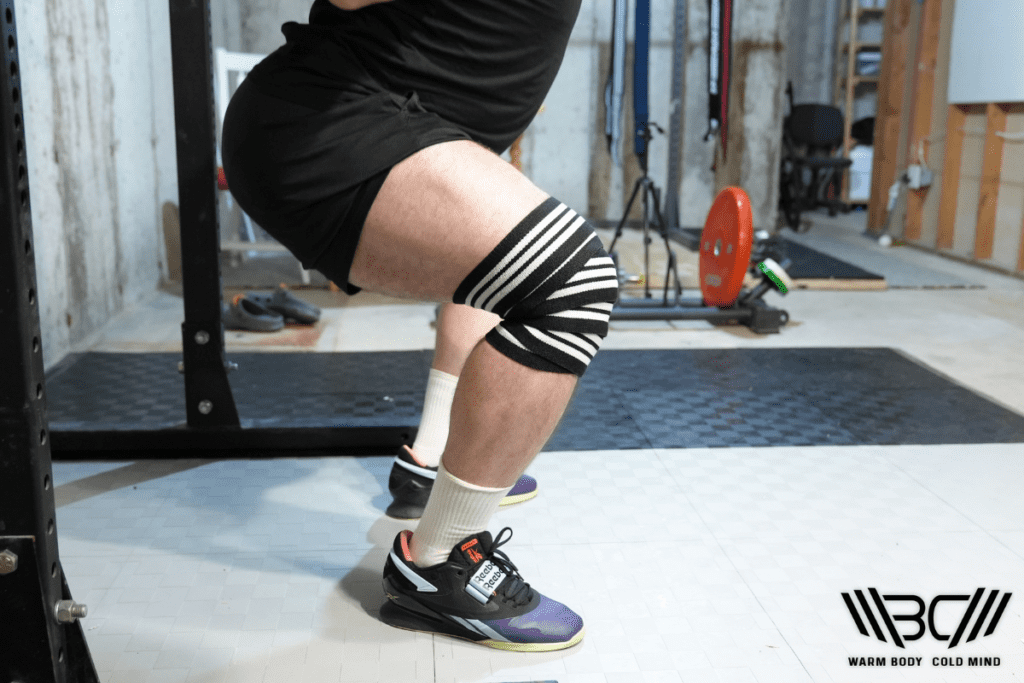
The first and foremost target should be set on improving the basics: technique, form, breathing, etc. Using wraps and belts will help with progression only when you’ve jumped to the next level and started regularly squatting heavy weights. Even at that stage, keep your warmups and submaximal lifts unwrapped.
What Are the Benefits of Using Knee Wraps?
The pivotal benefit of knee wraps is seamless progression: more load/ reps. You’ll notice a sizable improvement in your wrapped versus regular attempts. The following are a few motivators behind this superb ergogenic effect.
1. Knee Support
Knee wraps showed increased strength production capacity during knee extension. Compressing your knees keeps them warm, agile, and aware. It can reduce unwanted lateral movement, maintaining safe and stable knee tracking. EMG analyses have shown less stress on vastus lateralis (the largest of quadriceps muscles) when using knee wraps at high intensity.
2. Elastic Energy
The actual direct mechanical assistance enabling knee wraps to set 1RMs is sometimes called “elastic energy”. As you squat to the ground, wraps store the potential energy and throw it back up during the concentric phase. The amount of this carryover is reported at 19.8% for elite powerlifters and 25.1% for trained subjects. The speed out of the bottom position increases, which separates professionals from novice lifters.
3. No Change in Biomechanics
An in-depth study noted a 10% hike in vertical impulse and peak power, leading to greater mechanical output. The alteration in technique and target muscles was also picked. Researchers advised against using knee wraps before assessing and treating joint weakness. However, other studies have found no interference with the subjects’ biomechanics.
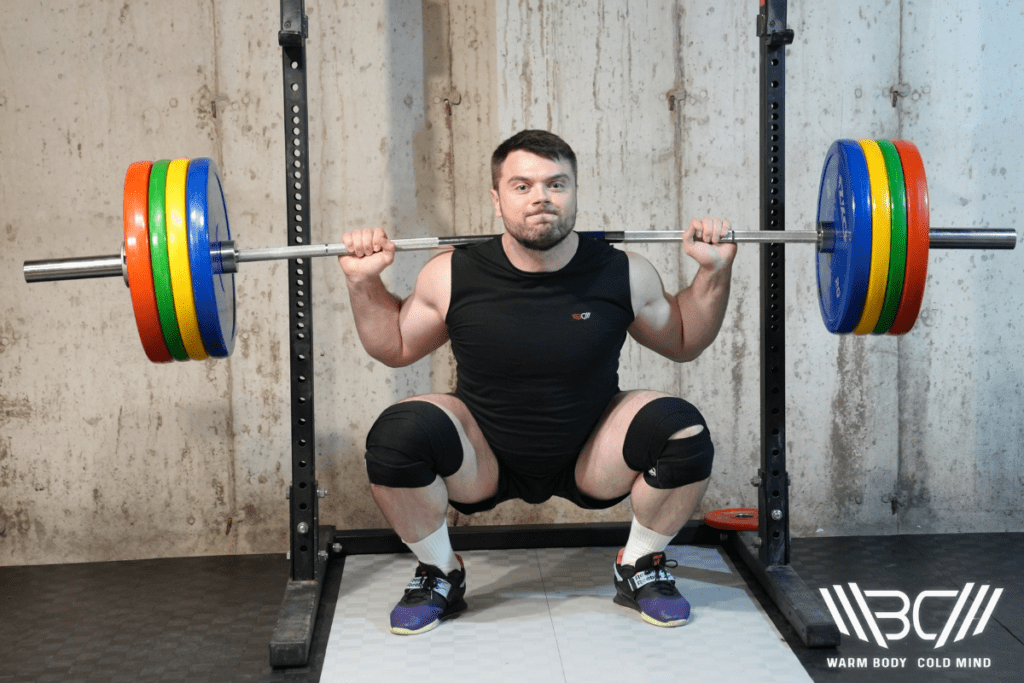
How to Put on Knee Wraps?
Learning how to use knee wraps properly is critical to boost your heavy lifting. Although there are several correct ways, there are wrong ways as well. Do not worry: we’ll discuss straightforward wrapping methods, techniques, and common mistakes.
A Step-by-Step Guide
Step 1
You should take some time to make a tight roll of the wrap. It will simplify and hasten the wrapping process. Remember, wraps are there to lift heavy loads. Wrap – Smash – Take ‘em off!
Step 2
Sit down and extend your leg in front of you. Start from behind the knee, slightly below the patella (kneecap). The direction matters: wrapping from outside to inside offers extra stability because your femur naturally rotates out when doing squats.
Step 3
Hold one end of the wrap with your free hand while looping it around the leg, covering the area from below to above the kneecap. You’ll have to cover at least 20cm above the joint to properly catch VM muscle attachments. Make sure the first loop is quite tight, so the fabric doesn’t slip off.
Step 4
Also, ensure there is enough compression by pulling each coil close to the other. About 50% overlap needs to be there. Having free or loose wraps will sacrifice joint support.
Step 5
Lock the velcro. Switch the leg. And repeat! How to use knee wraps without velcro fasteners? Simply tuck the leftover under wrapped fabric.
Basic Knee Wrapping Techniques
1. The Spiral
It’s the simplest approach. And it works for everyone! You spiral each wrap horizontally. There won’t be any diagonal layers coming across the knee. You’ll easily take the stretch out, moving up in a spiral pattern. Removing wraps afterward is quicker, as they unfold themselves when tucked open.
2. The Cross
Many lifters enhance the compression by adding crossed spirals. In this method, you have to create multiple “X” as the fabric stretches from the base of the knee to the top and down again. Additional diagonal wraps will expand the fabric along its length as well as width while descending.

Pro Tip:
You might be thinking, how to wrap knees for squats?
Common Mistakes
1. Failing to Balance the Tension
Maintaining tension loop after loop requires constant attention of the mind. If you stop tightening the wrap after a couple of spirals, the result will be compromised.
Additionally, some people can go overboard with the idea of snug fit. Tightening too much will cut off the range of motion and arterial blood flow. Even in occlusion training (which is expert-supervised), only veins are restricted.
In either non-optimal condition of tightness, you’ll miss big gains! We recommend keeping tension at 7 out of 10. For reference, if you wrap as tight as you can, that would entail a max individual score of 10.
2. Relying Excessively on Wraps
Wearing wraps feels good, and the upward spring allows faster and bigger lifts. However, the mental confidence and reassurance factor isn’t talked about enough. The constrictive nature of knee wraps makes them suitable for short periods, but leaving them on for an entire session, including the warmup and extended breaks, is a blunder.
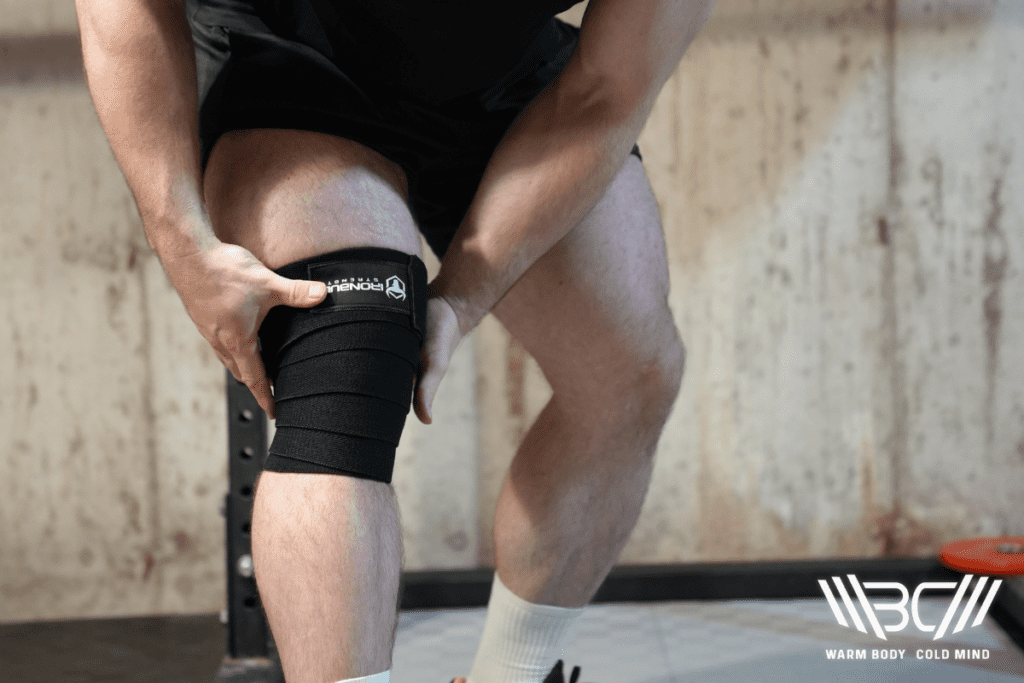
You should use them only for the heaviest sets and remove them instantly afterwards. Remember, wraps aren’t a cover-up for weak joints or a flawed technique — you’ll only end up exacerbating the situation.
What to Look for in Knee Wraps for Lifting?
If you’ve planned to grab a pair of knee wraps, understanding a few things will help you choose the right product.
1. Length
Knee wraps are generally 72” and 78” in length. They easily loop around the joint 4-5 times for firm support and mobility. However, you can find even longer straps like 98”, if needed. The width we recommend is 3”.
2. Material
Wraps are made of cotton-elastic materials, sometimes webbed with rubber for extra stretch. They act similarly to high-tensile fabric in powerlifting bodysuits and bench press shirts.
3. Durability
The quality of material and stitching determines the useful life of a wrap. You want high-grade polymers to prevent unnecessary wear and tear, while joints and seams should be reinforced and double-stitched.
4. Stiffness
Figuring out the right amount of stiffness is the most significant decision. A soft wrap is versatile, flexible, and comfortable. Stiffer variants will let you lift more on your back, but they can be restricting and irritating to the skin.
5. User Friendly
Advanced gripping technologies make wraps easier to don and doff as each loop catches onto the last one. At the same time, they don’t unroll or slip during workouts.
6. Closure Type
Having a velcro fastener can be useful. Trying to shove in a loose end under one of the tight wraps increases the tediousness of the job. A reliable and long-lasting velcro attachment improves the overall fit and security; however, it will affect the longevity.
7. Price/Quality
Knee wraps are among the cheapest lifting aids and have a limited use. You’ll only put them on for smashing maximal squats and a few more exercises, if possible. So, see if the hassle is really worth it.
Knee Wraps We Recommend
Gymreapers Knee Wraps boast ideal dimensions of 72” x 3.25” x 0.25” and will be a high-performing and high-value addition to your workout repertoire. Made of thick elastic material with reinforced stitching, the wrap stays in place and sustains maximum pressure. Besides, if aesthetics is important to you, they have nine colors to choose from. A large military-grade velcro strap tops off the list of features.
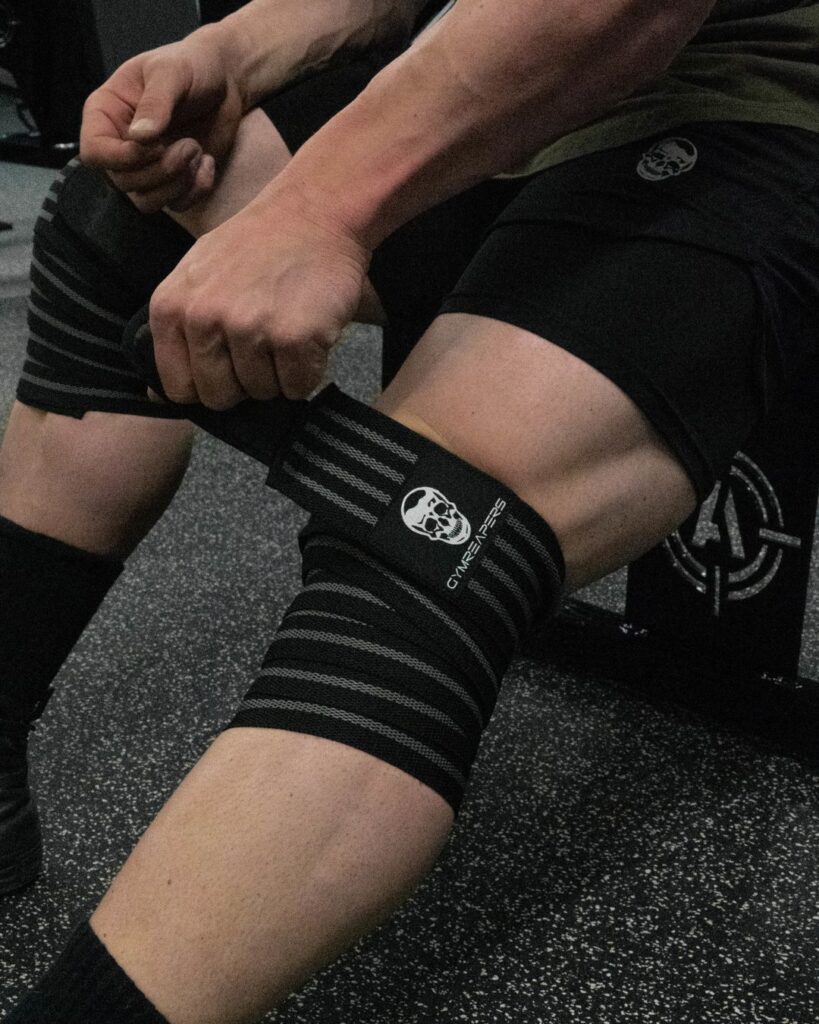
Knee Wraps vs. Knee Sleeves
Knee sleeves provide the support, compression, and warmth of wraps – but to a lesser extent compared with knee wraps. These cylindrical fits don’t inherently pack the spring effect, but neoprene sleeves may improve your 1RM barbell squats.

Pro Tip:
IPF and USAPL allow a maximum of 2m length and 8cm width of knee wraps, covering no more than 30cm of your leg when centered onto the joint.
Going for a smaller size won’t necessarily translate into more assistance. Sleeves are a preventive measure against injuries, and you can wear them for an entire session, keeping your knees warm and lubricated during rest periods.
Moreover, sleeves are allowed in almost every contest, while wraps are permitted in equipped powerlifting divisions, not raw/classic. Nevertheless, always check the concerned federation’s rules beforehand.
| Criterias | Knee Wraps | Knee Sleeves |
| Compression | High level of compression for the knee joint and surrounding muscles, actively looking to increase load and volume of your training. | Moderate compression based on the thickness of the material instead of tightness, unlikely to provide performance benefits but safety. |
| Mobility | Rigid and restrictive in nature; thus, they are suitable for short periods of time. | Allows a greater range of motion in the knee joint with lateral support. |
| Warmth | Must be taken off immediately after heavy sets; can’t be used for joint warmth during breaks. | Can keep your joints warm and blood flowing for an entire session. |
| Versatility | Essentially used for squats. | A wide variety of movements, including running, weightlifting, cross-training, etc. |
| Ease of Use | Involves a learning curve regarding the level of tightness, wrapping method, and techniques. | As long as you’ve bought the right size, sliding it on your leg is the simplest task. |
| Durability | Wraps are robust and last for a long time if taken care of. | neoprene is more susceptible to losing elasticity over time. |
| Adjustability | The level of support and compression depends on tightness, which can be customized every time. | Non-adjustable compression garment with multiple sizes. |
Knee Sleeves We Recommend
WBCM Weightlifting Knee Sleeves are a go-to option for various lower-body exercises. The potential application extends to weight training, cardio, and beyond. They’re 28-29 cm long, made of 0.27” pure neoprene, and available in six sizes and three color schemes. These sleeves provide medical-grade support for your knees thanks to anatomical and non-slip construction.
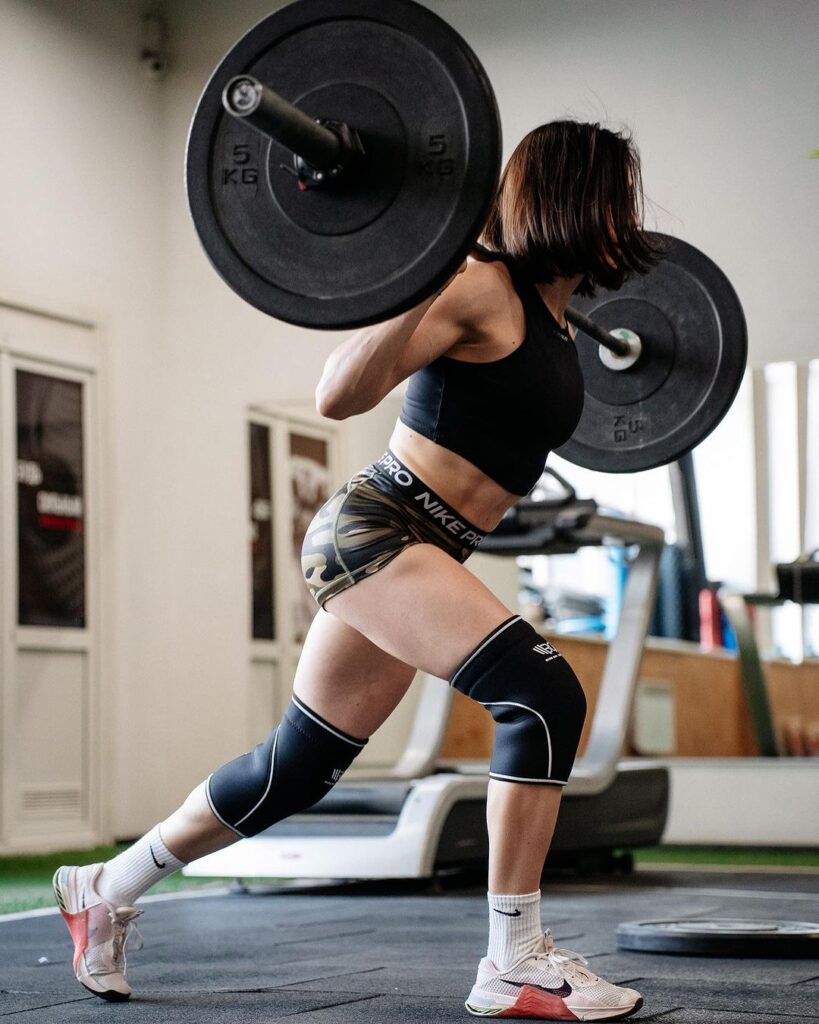
FAQ
1. When Should You Use Knee Wraps?
Knee wraps should be used during max efforts (over 80% of your 1RM). This way, you’ll get ergogenic advantages without overdependence on the gear.
2. How Tight Should Knee Wraps Be?
Knee wraps should be tight enough to stabilize the knee joint. Imagine a 1-10 scale. Striking a 7 works in most cases. You can touch 8 or 9 if tackling humongous weights. Limit the usage to avoid discomfort.
3. Should I Squat With Knee Wraps?
Once you’ve reached a level where increasing load or reps gets impossible, throw on supportive gears. For squats, that might be close to 2x your body weight. Note your new 1RM and wrap your knees for weights above 80% of that personal record.
Conclusion
A knee wrap is made of elastic material that can return to its original form after temporary deformation. When these deformations coincide with the eccentric (downward) phase of the squat, the resulting rebound aids in lifting the weight.
However, learning how to use knee wraps properly is critical to obtain maximum benefits and avoid pitfalls, such as a poor fit. Make snug and secure loops around the knee, either in a spiral or crossover fashion. Ensure there are no loose wraps. Lastly, use these aids for only maximal lifts.
Do you use knee wraps? For which type of lift and load do you prefer to strap up? Let us know your preferred wrapping technique and methods in the comment section!
References:
- Jason P. Lake, Patrick J. C. Carden, Kath A. Shorter, “Wearing Knee Wraps Affects Mechanical Output and Performance Characteristics of Back Squat Exercise,” Journal of Strength and Conditioning Research 26, no. 10 (2012): 2844-2849.
- J. D. Eitner, R. G. LeFavi, Bryan L. Riemann, “Kinematic and Kinetic Analysis of the Squat with and Without Knee Wraps,” Journal of Strength and Conditioning Research 25, S41 (2011).
- Nai-Jen Chang, Wei-Chun Hung, Chia-Lun Lee, Wen-Dien Chang, Bo-Han Wu, “Effects of a Single Session of Floss Band Intervention on Flexibility of Thigh, Knee Joint Proprioception, Muscle Force Output, and Dynamic Balance in Young Adults,” Applied Sciences 11, no. 24 (2021): 12052.
- Paulo Henrique Marchetti et al., “Can the Technique of Knee Wrap Placement Affect the Maximal Isometric Force during Back Squat Exercise?” International Journal of Sports Science 5, no. 1 (2015): 16-18, p-ISSN: 2169-8759, e-ISSN: 2169-8791.
- Steven B. Machek, Thomas D. Cardaci, Dylan T. Wilburn, Mitchell C. Cholewinski, Scarlett Lin Latt, Dillon R. Harris, Darryn S. Willoughby, “Neoprene Knee Sleeves of Varying Tightness Augment Barbell Squat One Repetition Maximum Performance Without Improving Other Indices of Muscular Strength, Power, or Endurance,” Journal of Strength and Conditioning Research 35, suppl. 1 (2021): S6-S15.
- Wendy M. Miletello, Jason R. Beam, Zachary C. Cooper, “A Biomechanical Analysis of the Squat between Competitive Collegiate, Competitive High School, and Novice Powerlifters,” The Journal of Strength and Conditioning Research 23, no. 5 (2009): 1611-7.
- Willy Andrade Gomes, Enrico Gori Soares, Josinaldo Jarbas da Silva, Erica Serpa “Acute Effects on Maximal Isometric Force with and without Knee Wrap During Squat Exercise,”International Journal of Sports Science & Coaching 4, no. 2 (2014): 47-49.
- Willy Andrade Gomes, Lee E. Brown, Josinaldo Jarbas da Silva, Enrico Gori Soares, “Kinematic and sEMG Analysis of the Back Squat at Different Intensities With and Without Knee Wraps,” Journal of Strength and Conditioning Research 29, no. 9 (2014): 2482-2487.
Author: Sergii Putsov
PhD in Sport Science, Olympic weightlifting, Strength & Conditioning coach and fitness expert
Sergii Putsov is a professional weightlifter with over 20 years of experience and multiple national medals. He was a member of the National weightlifting team, competing in the 94 kg weight class. Sergii holds a master’s degree in Olympic & Professional Sport Training and a Ph.D. in Sport Science. After his athletic career, Sergii transitioned into coaching and is now responsible for designing training programs, writing blog articles, providing live commentary for international weightlifting competitions, and hosting sport and fitness seminars worldwide.

